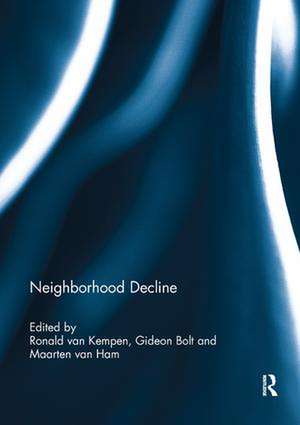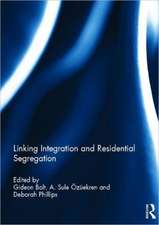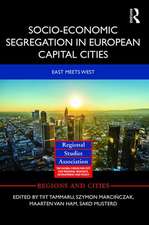Neighborhood Decline
Editat de Ronald van Kempen, Gideon Bolt, Maarten van Hamen Limba Engleză Paperback – 7 feb 2019
| Toate formatele și edițiile | Preț | Express |
|---|---|---|
| Paperback (1) | 269.70 lei 6-8 săpt. | |
| Taylor & Francis – 7 feb 2019 | 269.70 lei 6-8 săpt. | |
| Hardback (1) | 698.17 lei 6-8 săpt. | |
| Taylor & Francis – 11 iul 2017 | 698.17 lei 6-8 săpt. |
Preț: 269.70 lei
Nou
Puncte Express: 405
Preț estimativ în valută:
51.61€ • 56.04$ • 43.36£
51.61€ • 56.04$ • 43.36£
Carte tipărită la comandă
Livrare economică 23 aprilie-07 mai
Preluare comenzi: 021 569.72.76
Specificații
ISBN-13: 9780367229757
ISBN-10: 0367229757
Pagini: 146
Dimensiuni: 174 x 246 x 8 mm
Greutate: 0.25 kg
Ediția:1
Editura: Taylor & Francis
Colecția Routledge
Locul publicării:Oxford, United Kingdom
ISBN-10: 0367229757
Pagini: 146
Dimensiuni: 174 x 246 x 8 mm
Greutate: 0.25 kg
Ediția:1
Editura: Taylor & Francis
Colecția Routledge
Locul publicării:Oxford, United Kingdom
Public țintă
Postgraduate and UndergraduateCuprins
1. Neighborhood decline and the economic crisis: an introduction 2. The global financial crisis and neighborhood decline 3. Reclaiming neighborhood from the inside out: regionalism, globalization, and critical community development 4. The US Great Recession: exploring its association with Black neighborhood rise, decline and recovery 5. Neighborhood change beyond clear storylines: what can assemblage and complexity theories contribute to understandings of seemingly paradoxical neighborhood development? 6. Economic decline and residential segregation: a Swedish study with focus on Malmö 7. Are neighbourhoods dynamic or are they slothful? The limited prevalence and extent of change in neighbourhood socio-economic status, and its implications for regeneration policy 8. Race, class, unemployment, and housing vacancies in Detroit: an empirical analysis
Descriere
The authors of this this book show that the 2018 economic crisis has affected poor neighborhoods more severely than more affluent ones. This book was originally published as a special issue of Urban Geography.


























